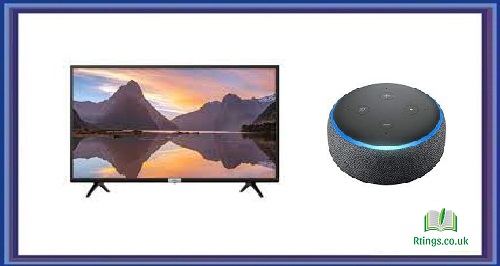There could be several reasons your TV won’t connect to the internet. This article will explore some common causes and solutions to help you troubleshoot the issue.
Network Connectivity
One of the most common reasons your TV may not connect to the internet is network connectivity issues. A range of factors, such as network outages, router issues, or poor Wi-Fi signal strength, could cause this.
Connect another device to your Wi-Fi network to determine if network connectivity is the issue. If the other device cannot connect, there is likely a problem with your network.
To resolve network connectivity issues, you can try the following:
- Restart your router and modem by unplugging them and plugging them back in after a few seconds. This can help to reset the network and fix any connectivity issues.
- Move your router closer to your TV to improve signal strength. Alternatively, you can use a Wi-Fi range extender or a powerline adapter to improve signal strength.
- Check your network settings to ensure your TV is connected to the correct network and the Wi-Fi password is correct.
Firmware Updates
Another reason why your TV may not be connecting to the internet is due to outdated firmware. Firmware is the software that runs on your TV and controls its functionality.
If your TV’s firmware needs to be updated, it may not be compatible with the latest network protocols or security standards. This can cause connection issues when trying to connect to the internet.
To check if your TV’s firmware is up to date, you can go to the manufacturer’s website and search for the latest firmware update for your specific TV model. If an update is available, follow the manufacturer’s instructions to download and install the update.
Firewall Settings
Firewall settings can also prevent your TV from connecting to the internet. A firewall is a security feature that blocks unauthorized access to your network.
If your TV’s firewall settings are too strict, they may block your TV from connecting to the internet. To check your TV’s firewall settings, you can access the settings menu and look for the firewall or security settings.
If the firewall settings are too strict, try adjusting them to allow your TV to connect to the internet. However, it is important to note that adjusting firewall settings can compromise your network’s security. Therefore, it is recommended to seek assistance from a professional if you need clarification on making changes to your firewall settings.
DNS Settings
Domain Name System (DNS) settings can also cause connectivity issues when connecting your TV to the internet. DNS is responsible for translating domain names (such as google.com) into IP addresses your devices can understand.
If your TV’s DNS settings are incorrect or outdated, it may be unable to connect to the internet. To check your TV’s DNS settings, you can access the settings menu and look for the network settings.
If the DNS settings are incorrect, try changing them to the correct DNS server address. You can find the correct DNS server address by contacting your internet service provider (ISP) or performing an online search.
Network Security
Network security settings can also cause connectivity issues when connecting your TV to the internet. Network security settings include WPA2 encryption, MAC address filtering, and network password protection.
If your TV’s security settings are too strict, they may prevent your TV from connecting to the internet. To check your TV’s security settings, you can access the settings menu on your TV and look for the network security settings.
If the security settings are too strict, try adjusting them to allow your TV to connect to the internet. However, it is important to note that adjusting network security settings can compromise your network’s security. Therefore, it is recommended to seek assistance from a professional if you need clarification on making changes to your network security settings.
Hardware Issues
In some cases, hardware issues may be why your TV won’t connect to the internet. This could be due to a faulty network card or a damaged Ethernet cable.
To troubleshoot hardware issues, you can try the following:
- Check the Ethernet cable to ensure it is properly connected and not damaged.
- Try using a different Ethernet cable to see if the issue is with the cable.
- Check if other devices connected to the same Ethernet port can connect to the internet. If they are not, there may be an issue with the Ethernet port.
- If your TV uses Wi-Fi to connect to the internet, try connecting it to a different Wi-Fi network to see if the issue is with the TV or the network.
If you suspect that there is a hardware issue with your TV, it is recommended to contact the manufacturer or professional repair service for assistance.
Conclusion
There could be several reasons your TV won’t connect to the internet, including network connectivity issues, outdated firmware, firewall settings, DNS settings, network security, and hardware issues. To troubleshoot the issue, you can reset your router, update your TV’s firmware, adjust your firewall and network security settings, change your DNS settings, or check for hardware issues. If you are unsure about making changes to your network settings or suspect a hardware issue, it is recommended to seek assistance from a professional.
Frequently Asked Questions (FAQs)
Why is my TV saying “no internet connection” even though my Wi-Fi is working?
There could be several reasons why your TV cannot connect to the internet despite your Wi-Fi working. Some possible causes include network connectivity issues, outdated firmware, firewall or security settings, DNS settings, and hardware issues. To troubleshoot the issue, try resetting your router, updating your TV’s firmware, adjusting your network settings, or checking for hardware issues. If you are unsure about making changes to your network settings or suspect a hardware issue, it is recommended to seek assistance from a professional.
Why won’t my TV turn on?
There could be several reasons why your TV won’t turn on, including a faulty power source, a damaged power cord, or a malfunctioning TV. To troubleshoot the issue, try checking if the power outlet is functioning correctly, ensuring that the power cord is connected securely, and unplugging the TV and waiting a few minutes before plugging it back in. If none of these solutions work, it may be a hardware issue that requires professional assistance.
How can I improve my Wi-Fi signal strength?
To improve your Wi-Fi signal strength, you can move your router to a central location in your home, reduce the number of devices connected to the network, or use a Wi-Fi range extender. You can also try changing the Wi-Fi channel or upgrading to a higher-quality router.
How can I reduce buffering when streaming on my TV?
To reduce buffering when streaming on your TV, try increasing your internet speed, optimizing your network settings, or using an Ethernet cable instead of Wi-Fi. Additionally, clearing the cache on your streaming app or upgrading to a higher-quality streaming device can help improve streaming performance.







